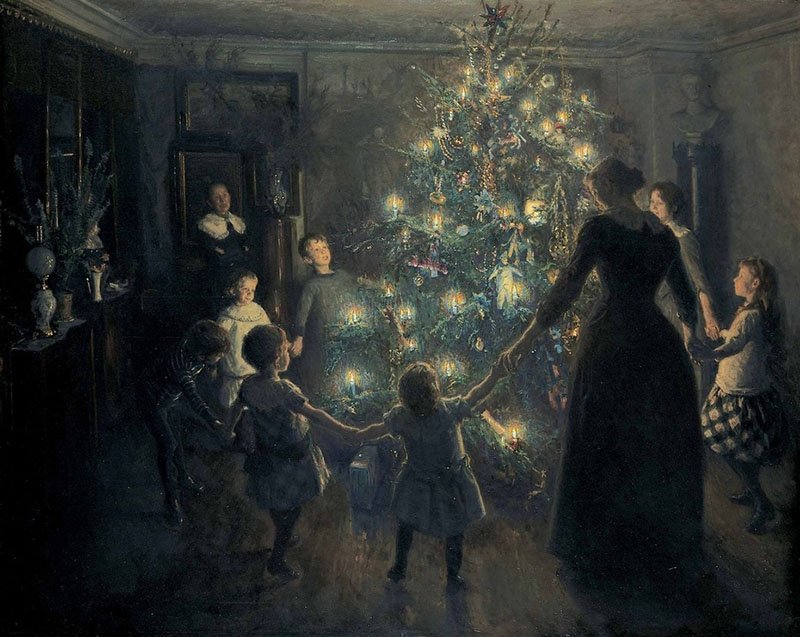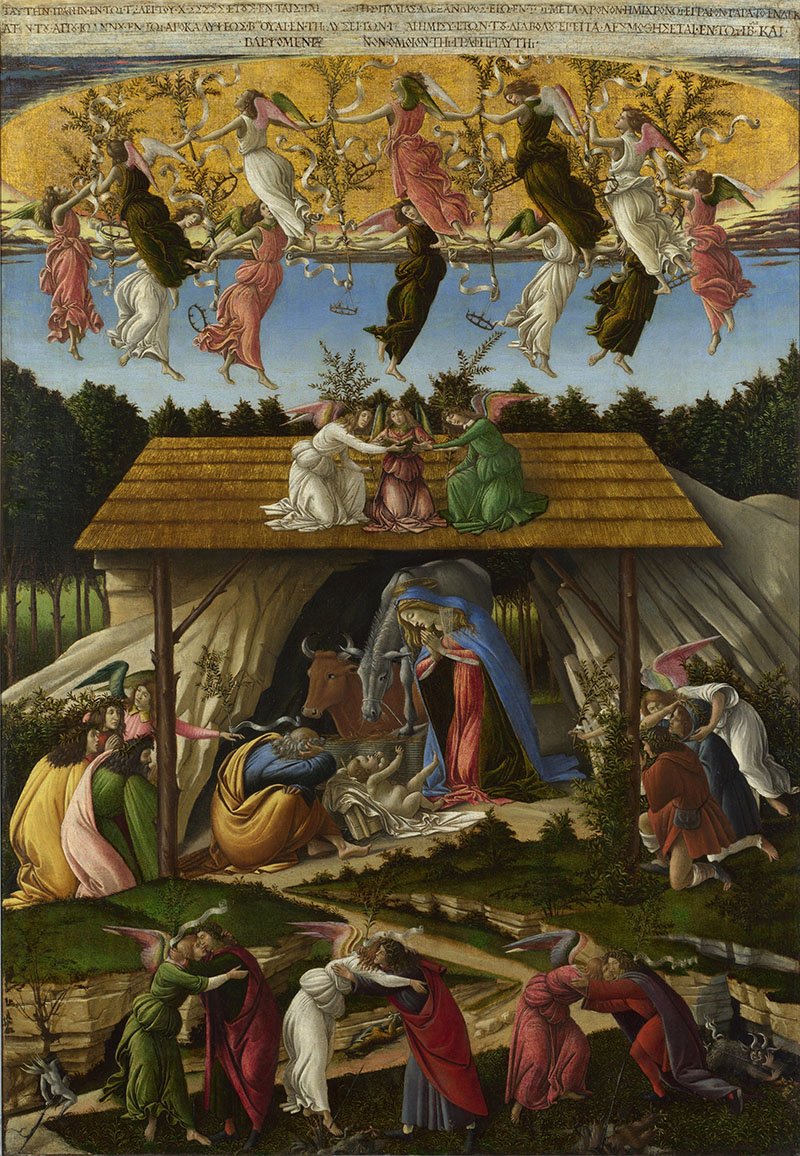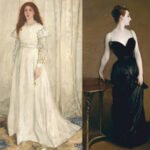Earlier The Story Of Christmas Wasn’t Told Through Storybooks. Rather, Artists Who Created Christmas Paintings, Sculptures And Other Works Of Art To Impart The Story Of The Season. Hop In And Find How!
Christmas has slightly evolved throughout the years as certain cultures change, but the overall purpose and theme has remained intact. This holiday season has been one that Christians have observed for many centuries and it was widely popular even before the Italian Renaissance era.
Artists across Europe and other parts of the world where the Christian religion has been prominent have created paintings which depict some of the most pivotal moments in the story of the birth of Christ. Some of the most famous artists from the Renaissance era are known to have created paintings of the nativity or other moments from this famous story of Jesus’ birth.
Read ahead and chooses your favourite depictions of the Christmas story.
1. MERRY CHRISTMAS BY VIGGO JOHANSEN

In this painting by Danish artist Viggo Johansen (1851-1935), a family holds hands and dances merrily around the Christmas tree. Painted in 1891, it is an atmospheric depiction of the artist’s family, singing carols on Christmas Eve. The only light in the room is provided by the many candles on the tree. Being a homey, nostalgic piece showing not just a moment in time, but also the warm feeling of tradition in an era when the giving and receiving of lavish presents was not the primary focus of the holiday. Instead, families celebrated with a small feast, and songs and games.
On the left side of the room is a wall unit whose black surface threatens to blur with the shadows that the night creates. Nevertheless, this darkness is by no means daunting or frightening, but can be considered positive and beautiful under the terminology of black romanticism, marvelling at a brightly lit Christmas tree.
2. SNOW AT ARGENTEUIL–CLAUDE MONET

Claude Monet is remembered as the father of the Impressionist movement, which took place in the late 18th and early 19th centuries. One of the most highly-revered Christmas paintings done during the Impressionist era was a work that Monet completed in 1875.
During a famously snowy winter, Monet was inspired to paint 18 views of the Parisian suburb of Argenteuil where he lived. This was the largest of the series, depicting Monet’s Street, the boulevard Saint-Denis. The winter of 1874 and 1875 was especially cold and harsh and brought thick blankets of snow around the time of the Christmas holiday.
Monet sacrifices details in favour of atmosphere. Here, the predominantly monochrome palette of blues and greys convey the bleakness of an overcast winter’s afternoon. As, snow is dotted with colour to denote light and shade, and to give a sense of the snow’s crunchy texture.
3. THE MYSTICAL NATIVITY – SANDRO BOTTICELLI

The Mystical Nativity is a painting by Sandro Botticelli, completed around 1500-1501, the only piece of Botticelli’s bearing his signature. Here, the infant Christ reaches up towards the Virgin Mary, oblivious of his visitors – the Three Kings on the left and the shepherds on the right. The golden dome of heaven has opened up and circled by 12 angels holding olive branches entwined with scrolls and hung with crowns. In the foreground, three pairs of angels and men embrace; among their feet demons scuttle for shelter in the underworld through cracks in the rocks.
Botticelli associated these events with the turmoil mentioned in the biblical Book of Revelation, which talks about the end of the world and Christ’s second coming. To depict the period of upheaval it described would end upon Christ’s return, when the devil would be buried, as in this picture. Moreover, the painting is a unique interpretation of the birth of Christ which draws on apocalyptic themes and the artist’s own innovative iconography.
4. ADORATION OF THE SHEPHERDS BY EL GRECO

This night scene is set in a narrow, irregular space – a sort of grotto with a gabled opening in the back, consisting of two semi- circular arches. Mary holds her newborn Son, naked on her lap, while Saint Joseph and three shepherds surround them, expressing their fervent devotion to the child, where a kneeling ox also contemplated the baby. Blue and yellow recur in the garments of the standing shepherd to the right, whereas the man on his left wears green, contrasting handsomely with the rose tunic and blue mantle of the Virgin. Against the background of the sky composed of flashing whites and blues, a group of angels’ hovers above the scene.
The compositional ellipse has been closed at the top by a group of angels very close to the holy family. This canvas marks the culmination of the formal refinement of the composition with which the painter had depicted this subject in his last versions. The Christ Child emits an intense light that bathes the small group contemplating him: the Virgin, Saint Joseph, three shepherds and a group of angels that form a sort of celestial vault. These figures constitute an excellent selection of this artist’s highly characteristic creations. Thus, this ecstatic painting is one of the artist’s most colourful works, which, unlike other paintings of this period, seems to have been entirely executed by his own hand, without the help of his son Jorge Manuel.



















